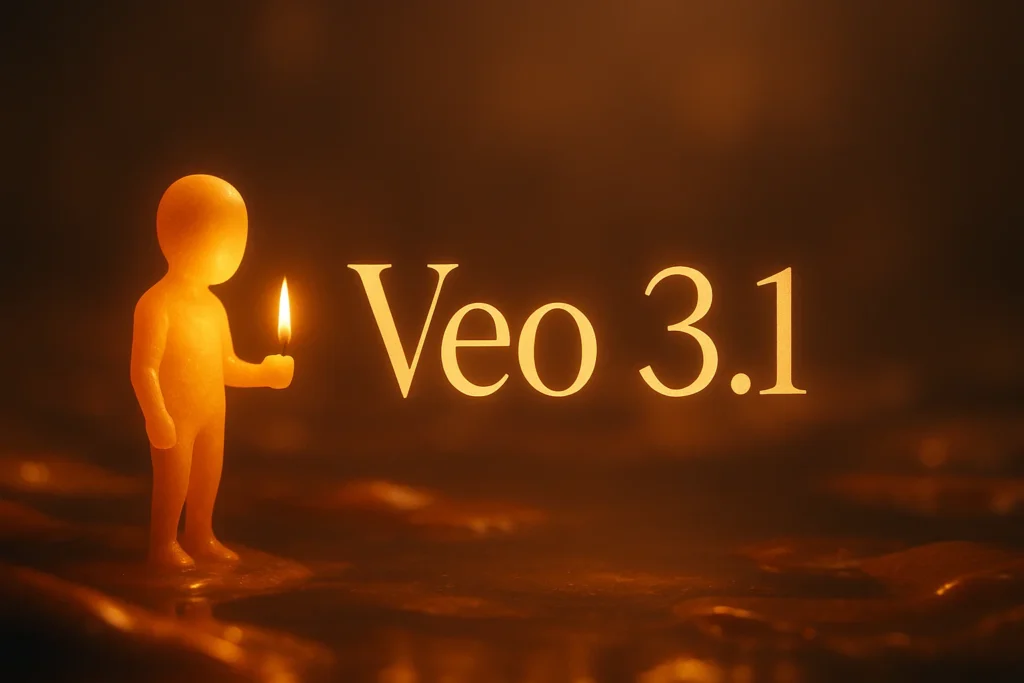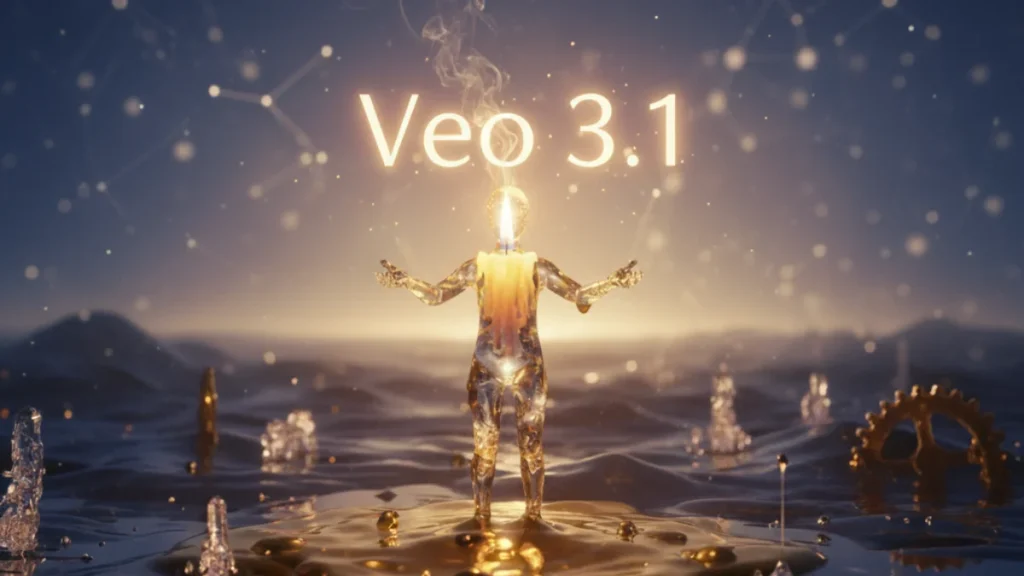Google’s latest update to its video AI ecosystem — Veo 3.1 — is now live across Flow, Gemini API, Vertex AI, and the Gemini app.
The upgrade brings richer audio, longer clips, precision editing, and developer-level access — marking Google’s biggest leap yet in generative filmmaking.
Key Takeaways
- Veo 3.1 powers Flow, Gemini API, Vertex AI, and Gemini App.
- Adds synchronized native audio and more narrative control.
- New “Insert” and “Remove” tools refine creative editing.
- Developers get veo-3.1 and veo-3.1-fast models in Gemini API.
- Veo 3.1 keeps the same pricing as Veo 3 — now in paid preview.
Veo 3.1 is Google’s new AI video model powering Flow, Gemini API, Vertex AI, and the Gemini app. It introduces richer audio, longer videos, and new editing tools like “Insert” and “Remove,” giving creators, developers, and enterprises unified access to high-quality, cinematic AI video generation.
Google’s next leap in generative video
Five months after the launch of Flow, Google’s cinematic AI filmmaking tool, the company is rolling out Veo 3.1, a unified model upgrade spanning Flow, Gemini API, Vertex AI, and the Gemini app.
The model builds on Veo 3’s cinematic realism and prompt control, introducing audio generation, longer video output, and more editing precision. With over 275 million videos already generated using Flow’s earlier versions, Veo 3.1 marks a new era in Google’s AI video evolution.

Veo 3.1: More realism, more control
At its core, Veo 3.1 enhances three dimensions: sound, style, and structure.
- Rich, native audio: Scenes now include synchronized sound effects, ambient audio, and even basic conversations.
- Narrative precision: Flow users can guide sequences using multiple images (“Ingredients to Video”) or generate seamless transitions (“Frames to Video”).
- Longer clips: The new “Extend” mode builds one-minute or longer sequences that flow naturally from previous footage.
The result is AI-generated storytelling that sounds and feels more human.
Editing reimagined in Flow
In Flow, Veo 3.1 brings a filmmaker’s toolkit directly into the interface:
- Insert: Add new objects or characters to a scene — Flow automatically adjusts shadows, lighting, and reflections for realism.
- Remove: Coming soon, this feature lets creators delete unwanted elements while reconstructing the background seamlessly.
Google says these tools were inspired by user feedback demanding “granular, frame-level control” within the creative process.
Veo 3.1 in Gemini API: Tools for developers
Developers can now tap into Veo 3.1 via Google’s Gemini API, available in paid preview with two variants:
- veo-3.1-generate-preview
- veo-3.1-fast (optimized for speed and shorter render times).
Example usage in Python:
from google import genai
from google.genai import types
client = genai.Client()
operation = client.models.generate_videos(
model="veo-3.1-generate-preview",
prompt=prompt,
config=types.GenerateVideosConfig(
reference_images=[reference_image1, reference_image2],
),
)
Developers can now guide generation using up to three reference images, control start-to-end transitions, or extend existing Veo clips for longer, continuous storytelling.
Vertex AI brings Veo 3.1 to enterprises
Enterprise teams using Vertex AI can now embed Veo 3.1 into internal production pipelines — for ad creative, visualization, training media, and entertainment prototyping. The upgrade is priced identically to Veo 3 and integrates with Gemini’s multimodal stack for large-scale deployments.
The bigger picture: Google’s unified creative stack
By embedding Veo 3.1 across Flow, Gemini API, Vertex AI, and the Gemini app, Google is standardizing its generative video foundation. This mirrors what OpenAI is doing with Sora 2, but Google’s edge lies in ecosystem reach — consumer (Gemini App), creator (Flow), developer (Gemini API), and enterprise (Vertex AI).
In other words, Veo 3.1 isn’t just a model; it’s the creative engine that ties Google’s AI ecosystem together.
Industry reaction and use cases
Early adopters like Promise Studios are already using Veo 3.1 through their MUSE platform for generative previsualization and storyboarding.
Meanwhile, Latitude is integrating the model into its interactive narrative engine, allowing users to instantly animate stories from text prompts.
Analysts suggest that Veo 3.1’s improvements in realism, audio fidelity, and consistency place Google ahead in the AI-video race — at least until OpenAI’s Sora 2 reaches open beta.
Why it matters
Veo 3.1 represents a turning point for generative video. It moves from “AI makes a short clip” to “AI helps you direct a full cinematic scene.”
For developers, it’s a programmable API; for creators, a hands-on editing suite; for enterprises, a scalable visual pipeline.
And for Google — it’s the backbone of a multi-billion-dollar creative AI strategy.
Conclusion
Veo 3.1 is Google’s most complete AI video model yet — blending developer flexibility, creator control, and enterprise scalability. Whether you code in Gemini, shoot in Flow, or prompt in the Gemini app, Veo 3.1 is the same powerful model driving it all.
